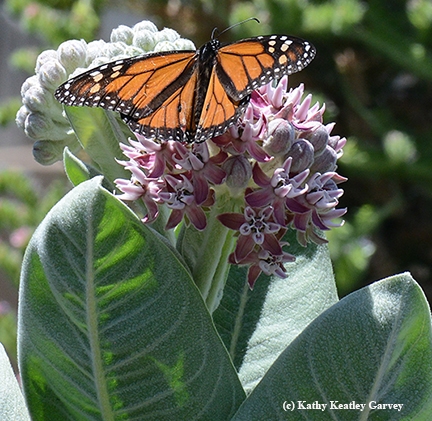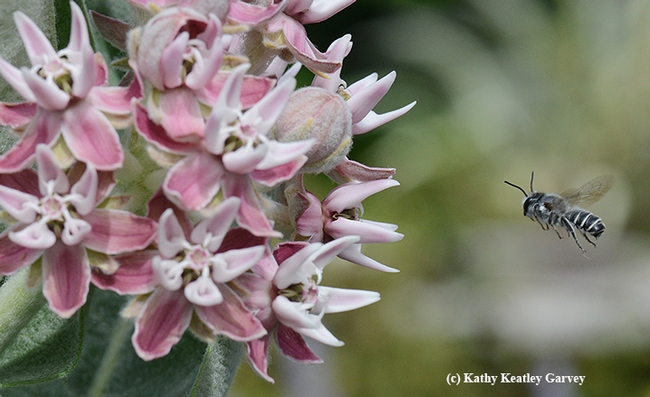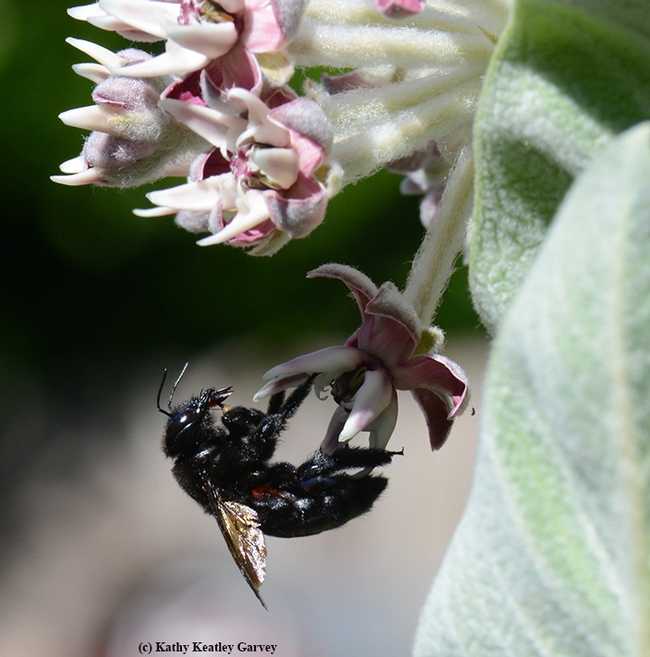
Bees--and other pollinators--gravitate toward the enticing aroma of the milkweed, too.
The milkweed is widely known as the larval host plant of the monarch butterflies--and a nectar source for the adults--but they have to share.
Bee-cause.
The broadleaf milkweed, Asclepias speciosa, in our pollinator garden draws everything from honey bees to leafcutter bees to carpenter bees.
It's almost like "Take a number." And it's especially noticeable during National Pollinator Week, a week set aside to celebrate the pollinators and to do what we can to protect them.
Recent visitors to the milkweed have included:
- A male Valley carpenter bee, Xylocopa varipuncta, a green-eyed blond
- A female Valley carpenter bee, Xylocopa varipuncta, solid black
- Honey bee, Apis mellifera
- Male leafcutter bee, Megachile sp.
And, of course, the monarchs (Danaus plexippus)!
Attached Images:

A male leafcutter bee, Megachile sp., in flight, heading toward the milkweed. (Photo by Kathy Keatley Garvey)

A male leafcutter bee, Megachile sp., sips nectar from a milkweed. (Photo by Kathy Keatley Garvey)

A male Valley carpenter bee, Xylocopa varipuncta, a green-eyed blond, sipping nectar from the milkweed.(Photo by Kathy Keatley Garvey)

A female Valley carpenter bee, Xylocopa varipuncta, sipping nectar from the milkweed. (Photo by Kathy Keatley Garvey)

A honey bee leaving with pollinia (pollen structure) from the milkweed. (Photo by Kathy Keatley Garvey)